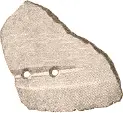
Fig. 463. Fragment of an ulo blade of slate. (Museum für Völkerkunde, Berlin. IV A 6714.) 1/1
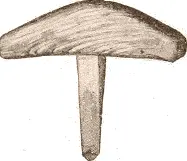
Fig. 464. Ulo handle from recent grave. (National Museum, Washington. 34137.)
If the skin is to be used with the hair on it, the tough membrane (mami) which covers the inner side is removed in the same way as the blubber and, after it has been carefully patched up and holes have been cut all around the edge, is stretched over a gravelly place or on snow by means of long pegs (pauktun), which hold it a few inches above the ground, thus allowing the air to circulate underneath it. The skin itself is washed and rubbed with gravel, snow, or ice and every hole made by the bullet or by the spear or in preparing it is sewed up. It very seldom happens that the women in preparing it damage the skin or even the thin mami. It is particularly difficult to split the skin near a hole. First they finish the work all around it and then carefully sever the membrane at its edge. The skin is dried in the same way as the membrane. In the early part of spring, though it may still be very cold, a few choice young sealskins are dried on snow walls which face to the south. In order thoroughly to dry a sealskin one fine warm spring day is needed. If the Eskimo are greatly in need of skins they dry them in winter over the lamps. A frame is made of four poles, lashed together, according to the size of the skin. A thong passes through the slits along its edge and around the frame, keeping the skin well stretched. Thus it is placed over the lamps or near the roof of the hut. However, it is disagreeable work to dry the skins inside the huts, and, as they are much inferior to those which are dried on the ground, the Eskimo avoid it if they can. When so prepared the sealskins are only fit for covering tents, making bags, &c.; they are far too hard to be used for clothing, for which purpose the skin of yearlings is almost exclusively used. The young seals, having shed for the first time, have a very handsome coat, the hair being of a fine texture and much longer than in older animals. From the middle of May until late in summer their skins are most suitable for the manufacture of summer clothing, but it is necessary to protect the carcasses of the killed animals from the burning rays of the sun as soon as possible or the skin would be quickly spoiled.

Fig. 465. Modern tesirqun or scraper. (Museum für Völkerkunde, Berlin. IV A 6734.)
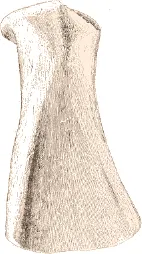
Fig. 466. Old style of tesirqun or scraper. (Museum für Völkerkunde, Berlin.)
After being dried they are cleaned with the sharp scraper (tesirqun), the modern device of which is represented in Fig. 465. It consists of a handle having a round back and a flat front, with two grooves for the knuckles of the first and second fingers, while the thumb and the other fingers clasp the handle. The scraper itself consists of a rounded piece of tin riveted to the handle. The old scraper (Fig. 466) was made of a deer’s shoulder or of some other bone. I have never seen any that were made of a thigh bone, similar to those found by Lucien M. Turner in Ungava Bay.

Fig. 467. Seligoung or scraper used for softening skins.
(Museum für Völkerkunde, Berlin. IV A 6697.)
After being scraped the skin is soaked in salt water and washed again. As soon as it is dry it is softened with the straight scraper (seligoung) (Fig. 467).
Fig. 468 shows some very old stone scrapers found in graves. As the stones are sharpened it is probable that they were used for cleaning the skins. The hole in the right side of the handle is used for the second finger, the grooves on the back for the third and fourth. The bone is fastened to the handle by whalebone straps or thongs.
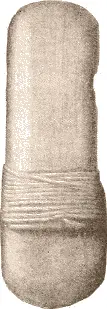

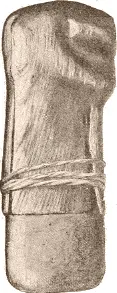
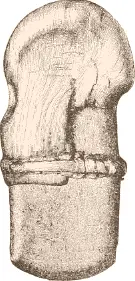
Fig. 468. Old stone scrapers found in graves.
(National Museum, Washington, a , b , 34083; c , 34084; d , 34085.) ⅔
Skins of Phoca annellata , Phoca cristata , and Phoca grœnlandica are prepared in the same way.
Those which are intended for kayak covers, boots, mittens, quivers, &c. are prepared in a different way. They are either put into hot water or laid in a brook for a few days until the hair begins to loosen. Then both sides are worked with the ulo, in order to clean and shave them. When the hair is removed they are dried and made pliable in the same way as has been described. If it is intended to make the skin as soft as possible it is allowed to become putrid before it is cleansed. Then the hair and the blubber are removed, and afterwards it is left to hang in the sun for a few days until it acquires a light color.
The large ground seal ( Phoca barbata ) is skinned in a different manner. Its skin is very thick, thicker even than sole leather, and therefore extremely durable and suitable for all sorts of lines, particularly traces, lashings, and harpoon lines, and for soles, drinking cups, and boat covers. This seal is very large, sometimes attaining a length of ten feet. The skin of the back and of the breast dries unequally, and therefore a piece covering the throat and breast is taken out before the rest is skinned, and the parts are dried separately. If it is to be used for lines it is cut by making girdles about six inches in width around the body. The hair and the blubber are removed from these cylindrical rings, from which lines are made by cutting spirally, a strip seventy or eighty feet long being thus obtained. This line is stretched as taut as possible between two rocks, and while drying it undergoes an enormous tension. Before being taken from the rocks the edges are rounded and cleaned with a knife.
Walrus hide is always cut up before being prepared. As soon as the walrus is killed it is cut into as many parts as there are partners in the hunt, every part being rolled up in a piece of skin and carried home in it. Sometimes the skin is used for making boats, but generally it is cut into lines. Both kinds of hide, that of the walrus and that of the ground seal, are as stiff as a board when dried and require much work before being fit for use. They are chewed by the natives until they become thin and pliable. The whole skin must be chewed in this way before it can be used for soles and boat covers. Afterwards it is scraped with the tesirqun and softened with the straight scraper. The new thongs, after being dried between the rocks, must also be chewed until they become sufficiently pliable, after which they are straightened by a stretcher that is held with the feet (Fig. 469). Frequently they are only pulled over the sole of the boot for this purpose, the man taking hold of the line at two points and pulling the intermediate part by turns to the right and to the left over the sole of the foot.
Читать дальше





















